-
 Bitcoin
Bitcoin $108,639.5535
1.29% -
 Ethereum
Ethereum $2,507.1944
3.16% -
 Tether USDt
Tether USDt $1.0003
0.00% -
 XRP
XRP $2.1982
0.65% -
 BNB
BNB $654.1814
0.99% -
 Solana
Solana $152.3907
1.88% -
 USDC
USDC $0.9998
-0.01% -
 TRON
TRON $0.2763
0.40% -
 Dogecoin
Dogecoin $0.1683
3.32% -
 Cardano
Cardano $0.5716
1.42% -
 Hyperliquid
Hyperliquid $40.7564
8.17% -
 Bitcoin Cash
Bitcoin Cash $500.5813
1.41% -
 Sui
Sui $2.8642
2.51% -
 Chainlink
Chainlink $13.5555
1.79% -
 UNUS SED LEO
UNUS SED LEO $9.1649
0.51% -
 Avalanche
Avalanche $18.4650
3.41% -
 Stellar
Stellar $0.2386
0.24% -
 Toncoin
Toncoin $2.8878
1.59% -
 Shiba Inu
Shiba Inu $0.0...01168
1.67% -
 Litecoin
Litecoin $87.6955
2.00% -
 Hedera
Hedera $0.1517
3.12% -
 Monero
Monero $312.6714
1.11% -
 Polkadot
Polkadot $3.5008
3.27% -
 Bitget Token
Bitget Token $4.6166
-0.55% -
 Dai
Dai $0.9999
0.00% -
 Ethena USDe
Ethena USDe $1.0002
0.01% -
 Uniswap
Uniswap $7.3109
3.98% -
 Pepe
Pepe $0.0...01008
6.25% -
 Aave
Aave $276.8587
7.04% -
 Pi
Pi $0.5277
-0.95%
How to trade limit orders and market orders on MEXC?
Learn to trade on MEXC with limit orders for price control and market orders for quick execution. Use advanced orders like stop-limit for strategic trading.
Apr 03, 2025 at 07:14 pm
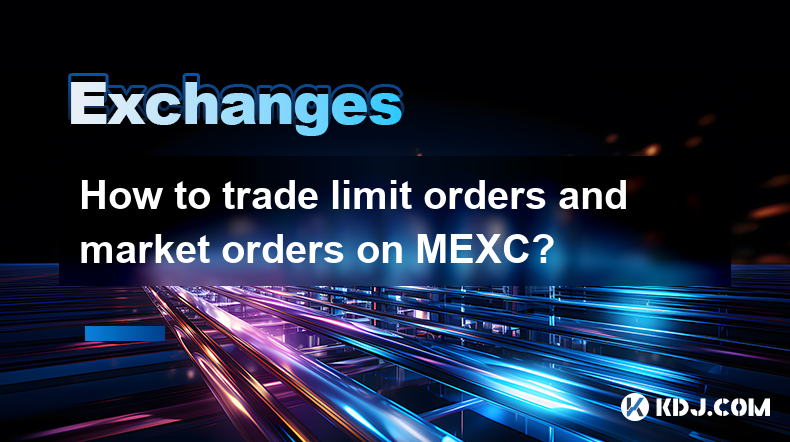
Trading on cryptocurrency exchanges like MEXC involves understanding different types of orders, such as limit orders and market orders. Each type of order serves a specific purpose and can be used strategically depending on your trading goals. In this article, we will explore how to trade limit orders and market orders on MEXC, providing detailed steps and insights into their use.
Understanding Limit Orders
Limit orders allow you to buy or sell a cryptocurrency at a specific price or better. When you place a limit order, it will only be executed if the market reaches your specified price. This type of order is useful for traders who want to control the price at which they enter or exit a position.
To place a limit order on MEXC, follow these steps:
- Log into your MEXC account and navigate to the trading page.
- Select the trading pair you want to trade. For example, if you want to trade Bitcoin (BTC) against USDT, select the BTC/USDT pair.
- Choose the order type as "Limit Order."
- Enter the price at which you want to buy or sell the cryptocurrency. For a buy order, this is the maximum price you are willing to pay. For a sell order, this is the minimum price you are willing to accept.
- Specify the amount of cryptocurrency you want to buy or sell.
- Review your order and click "Buy" or "Sell" to submit it.
Once your limit order is placed, it will remain in the order book until it is filled or canceled. If the market reaches your specified price, your order will be executed.
Understanding Market Orders
Market orders are used to buy or sell a cryptocurrency at the best available current market price. This type of order is executed immediately, making it suitable for traders who want to enter or exit a position quickly.
To place a market order on MEXC, follow these steps:
- Log into your MEXC account and navigate to the trading page.
- Select the trading pair you want to trade.
- Choose the order type as "Market Order."
- Specify the amount of cryptocurrency you want to buy or sell.
- Review your order and click "Buy" or "Sell" to submit it.
Market orders are filled instantly at the current market price, which means you do not have control over the exact price at which your order is executed. This can be advantageous in fast-moving markets but can also result in slippage, where the executed price differs from the expected price.
Strategic Use of Limit and Market Orders
Understanding when to use limit orders and market orders can significantly impact your trading strategy. Limit orders are ideal for traders who want to set a specific entry or exit price, allowing them to take advantage of price movements without constantly monitoring the market. For example, if you believe the price of a cryptocurrency will drop to a certain level before rising again, you can place a limit buy order at that level.
On the other hand, market orders are useful when you need to execute a trade quickly. If you see a sudden price movement and want to enter or exit a position immediately, a market order ensures that your trade is executed without delay. However, be aware of the potential for slippage, especially in volatile markets.
Managing and Canceling Orders
Once you have placed your orders on MEXC, you can manage and cancel them as needed. To manage your orders, follow these steps:
- Navigate to the "Open Orders" section on the trading page.
- Locate the order you want to manage or cancel.
- Click on the "Cancel" button next to the order to cancel it.
It's important to regularly review your open orders to ensure they align with your current trading strategy. If market conditions change, you may need to adjust or cancel your orders accordingly.
Monitoring Order Execution
After placing your orders, it's crucial to monitor their execution to ensure they are filled as expected. MEXC provides tools to help you track your orders and trades.
- Check the "Order History" section to see the status of your orders. This section will show whether your orders have been filled, partially filled, or canceled.
- Review the "Trade History" section to see the details of your executed trades, including the price and time of execution.
By regularly monitoring your orders and trades, you can gain insights into market behavior and adjust your trading strategy accordingly.
Using Advanced Order Types
In addition to limit and market orders, MEXC offers advanced order types that can enhance your trading strategy. These include stop-limit orders and stop-market orders.
- Stop-limit orders allow you to set a stop price and a limit price. When the market reaches the stop price, a limit order is triggered. This type of order is useful for setting a specific entry or exit price after a certain price level is reached.
- Stop-market orders are similar, but when the market reaches the stop price, a market order is triggered. This type of order is useful for quickly entering or exiting a position once a certain price level is reached.
To place a stop-limit or stop-market order on MEXC, follow these steps:
- Log into your MEXC account and navigate to the trading page.
- Select the trading pair you want to trade.
- Choose the order type as "Stop-Limit Order" or "Stop-Market Order."
- Enter the stop price at which you want the order to be triggered.
- For stop-limit orders, enter the limit price at which you want the order to be executed.
- Specify the amount of cryptocurrency you want to buy or sell.
- Review your order and click "Buy" or "Sell" to submit it.
Using these advanced order types can help you manage risk and execute trades more effectively.
Frequently Asked Questions
Q: Can I place multiple limit orders at different price levels on MEXC?
A: Yes, you can place multiple limit orders at different price levels on MEXC. This strategy, known as "layering," allows you to set multiple entry or exit points, increasing your chances of executing trades at favorable prices.
Q: How does MEXC handle partial fills for limit orders?
A: MEXC allows for partial fills of limit orders. If the market reaches your specified price but there is not enough volume to fill your entire order, it will be partially filled. The remaining portion of your order will stay in the order book until it is filled or canceled.
Q: What happens if the market price moves away from my limit order price on MEXC?
A: If the market price moves away from your limit order price, your order will remain in the order book until the market reaches your specified price or you cancel the order. If the market never reaches your price, your order will not be executed.
Q: Can I convert a limit order to a market order on MEXC?
A: No, you cannot directly convert a limit order to a market order on MEXC. If you want to change your order type, you will need to cancel the existing limit order and place a new market order.
Disclaimer:info@kdj.com
The information provided is not trading advice. kdj.com does not assume any responsibility for any investments made based on the information provided in this article. Cryptocurrencies are highly volatile and it is highly recommended that you invest with caution after thorough research!
If you believe that the content used on this website infringes your copyright, please contact us immediately (info@kdj.com) and we will delete it promptly.
- Blockchain, Apple Stock, and UAE Investors: A New York Minute on Digital Finance
- 2025-06-30 10:30:11
- SEC, Grayscale, and Bitcoin ETFs: A New York Minute on Crypto's Next Big Thing
- 2025-06-30 10:30:11
- Bitcoin, Corporate Restructuring, and Institutional Investors: A New Era?
- 2025-06-30 10:50:12
- Cardano, Hoskinson, and Bitcoin DeFi: A New Narrative?
- 2025-06-30 11:10:14
- Ondo Finance and the Tokenized Revolution: Are Blockchain Stocks the Future?
- 2025-06-30 11:10:14
- SEI User Activity Sparks Short Squeeze Talk as Price Nears Key Resistance
- 2025-06-30 08:30:12
Related knowledge
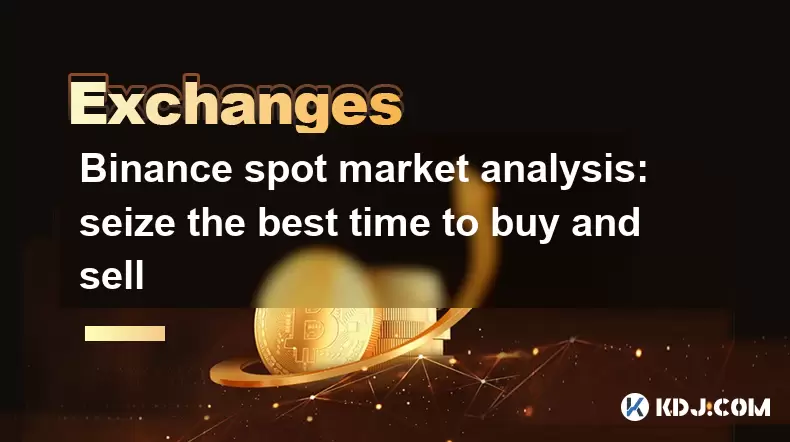
Binance spot market analysis: seize the best time to buy and sell
Jun 19,2025 at 04:56pm
Understanding the Binance Spot MarketThe Binance spot market is one of the most popular platforms for cryptocurrency trading globally. It allows users to trade digital assets at current market prices, making it essential for traders aiming to buy low and sell high. Unlike futures or margin trading, spot trading involves direct ownership of the asset aft...
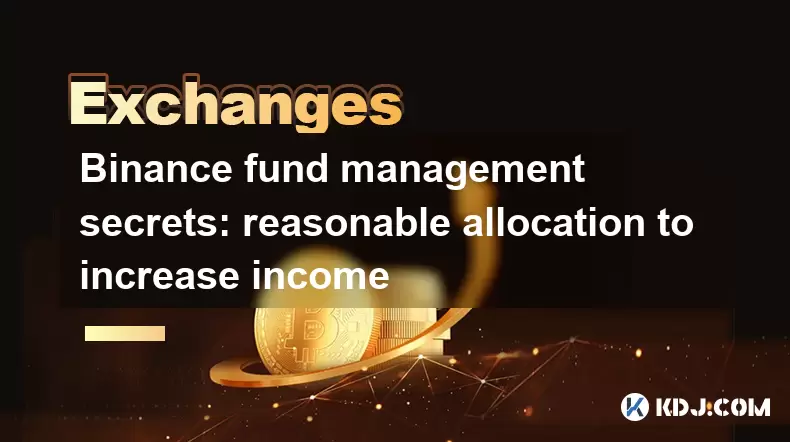
Binance fund management secrets: reasonable allocation to increase income
Jun 22,2025 at 02:29pm
Understanding Binance Fund ManagementBinance fund management involves strategic allocation of your cryptocurrency assets to optimize returns while managing risk. The key to successful fund management lies in understanding how different investment options on the Binance platform can be utilized to create a diversified portfolio. This includes spot tradin...
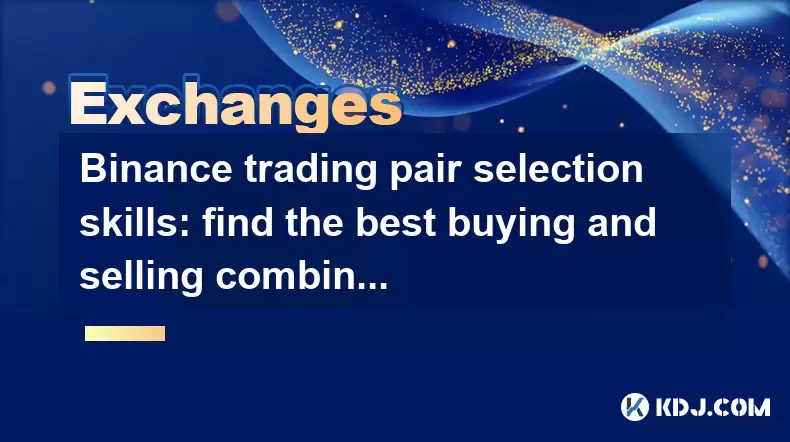
Binance trading pair selection skills: find the best buying and selling combination
Jun 23,2025 at 02:49am
Understanding the Basics of Trading Pairs on BinanceBefore diving into trading pair selection skills, it's essential to understand what a trading pair is. On Binance, a trading pair refers to two cryptocurrencies that can be traded against each other. For example, BTC/USDT means Bitcoin is being traded against Tether. Each trading pair has its own liqui...
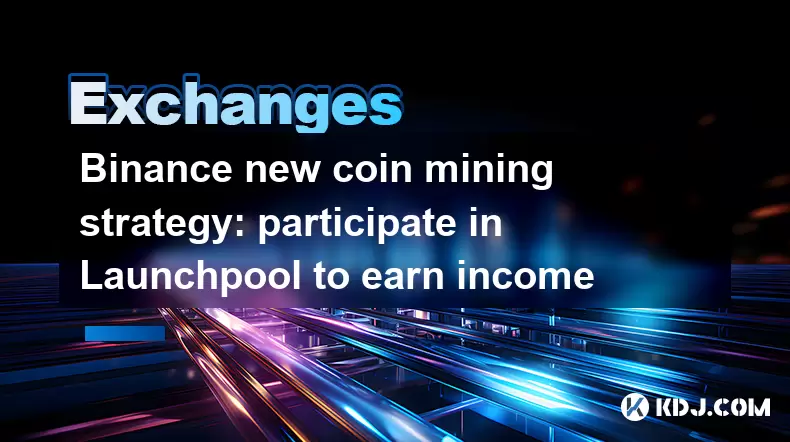
Binance new coin mining strategy: participate in Launchpool to earn income
Jun 23,2025 at 11:56am
What is Binance Launchpool and how does it work?Binance Launchpool is a feature introduced by the world’s largest cryptocurrency exchange, Binance, to allow users to earn new tokens through staking. This platform enables users to stake their existing cryptocurrencies (such as BNB, BUSD, or other supported assets) in exchange for newly launched tokens. T...
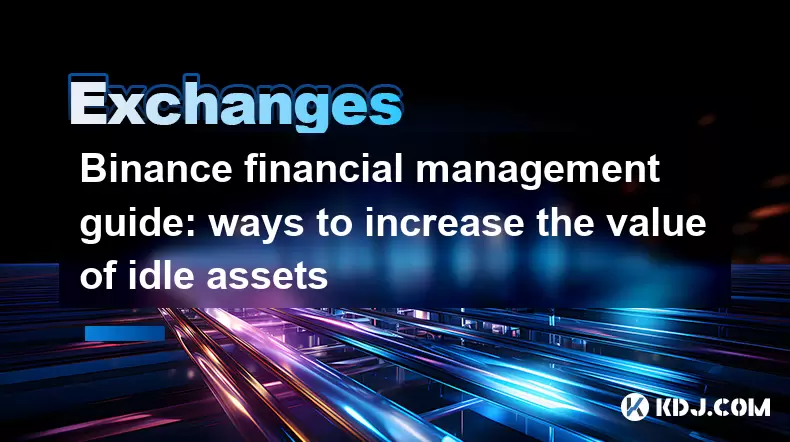
Binance financial management guide: ways to increase the value of idle assets
Jun 19,2025 at 11:22pm
Understanding Idle Assets in the Cryptocurrency SpaceIn the fast-paced world of cryptocurrency, idle assets refer to digital currencies that are not actively being used for trading, staking, or yield farming. Holding these funds in a wallet without utilizing them means missing out on potential growth opportunities. Binance, as one of the leading platfor...
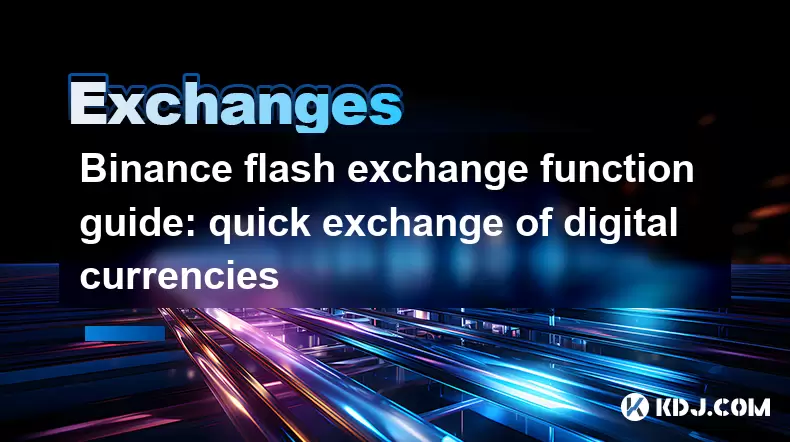
Binance flash exchange function guide: quick exchange of digital currencies
Jun 23,2025 at 12:29pm
What is the Binance Flash Exchange Function?The Binance Flash Exchange function is a powerful tool designed to allow users to instantly swap between supported cryptocurrencies without the need for placing traditional buy/sell orders. This feature simplifies the trading process by offering a direct exchange mechanism, eliminating the requirement to conve...

Binance spot market analysis: seize the best time to buy and sell
Jun 19,2025 at 04:56pm
Understanding the Binance Spot MarketThe Binance spot market is one of the most popular platforms for cryptocurrency trading globally. It allows users to trade digital assets at current market prices, making it essential for traders aiming to buy low and sell high. Unlike futures or margin trading, spot trading involves direct ownership of the asset aft...

Binance fund management secrets: reasonable allocation to increase income
Jun 22,2025 at 02:29pm
Understanding Binance Fund ManagementBinance fund management involves strategic allocation of your cryptocurrency assets to optimize returns while managing risk. The key to successful fund management lies in understanding how different investment options on the Binance platform can be utilized to create a diversified portfolio. This includes spot tradin...

Binance trading pair selection skills: find the best buying and selling combination
Jun 23,2025 at 02:49am
Understanding the Basics of Trading Pairs on BinanceBefore diving into trading pair selection skills, it's essential to understand what a trading pair is. On Binance, a trading pair refers to two cryptocurrencies that can be traded against each other. For example, BTC/USDT means Bitcoin is being traded against Tether. Each trading pair has its own liqui...

Binance new coin mining strategy: participate in Launchpool to earn income
Jun 23,2025 at 11:56am
What is Binance Launchpool and how does it work?Binance Launchpool is a feature introduced by the world’s largest cryptocurrency exchange, Binance, to allow users to earn new tokens through staking. This platform enables users to stake their existing cryptocurrencies (such as BNB, BUSD, or other supported assets) in exchange for newly launched tokens. T...

Binance financial management guide: ways to increase the value of idle assets
Jun 19,2025 at 11:22pm
Understanding Idle Assets in the Cryptocurrency SpaceIn the fast-paced world of cryptocurrency, idle assets refer to digital currencies that are not actively being used for trading, staking, or yield farming. Holding these funds in a wallet without utilizing them means missing out on potential growth opportunities. Binance, as one of the leading platfor...

Binance flash exchange function guide: quick exchange of digital currencies
Jun 23,2025 at 12:29pm
What is the Binance Flash Exchange Function?The Binance Flash Exchange function is a powerful tool designed to allow users to instantly swap between supported cryptocurrencies without the need for placing traditional buy/sell orders. This feature simplifies the trading process by offering a direct exchange mechanism, eliminating the requirement to conve...
See all articles

























































































